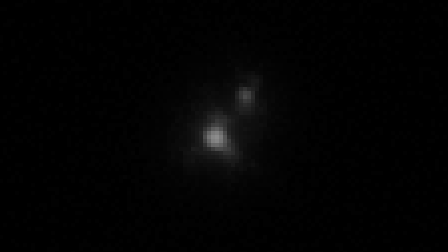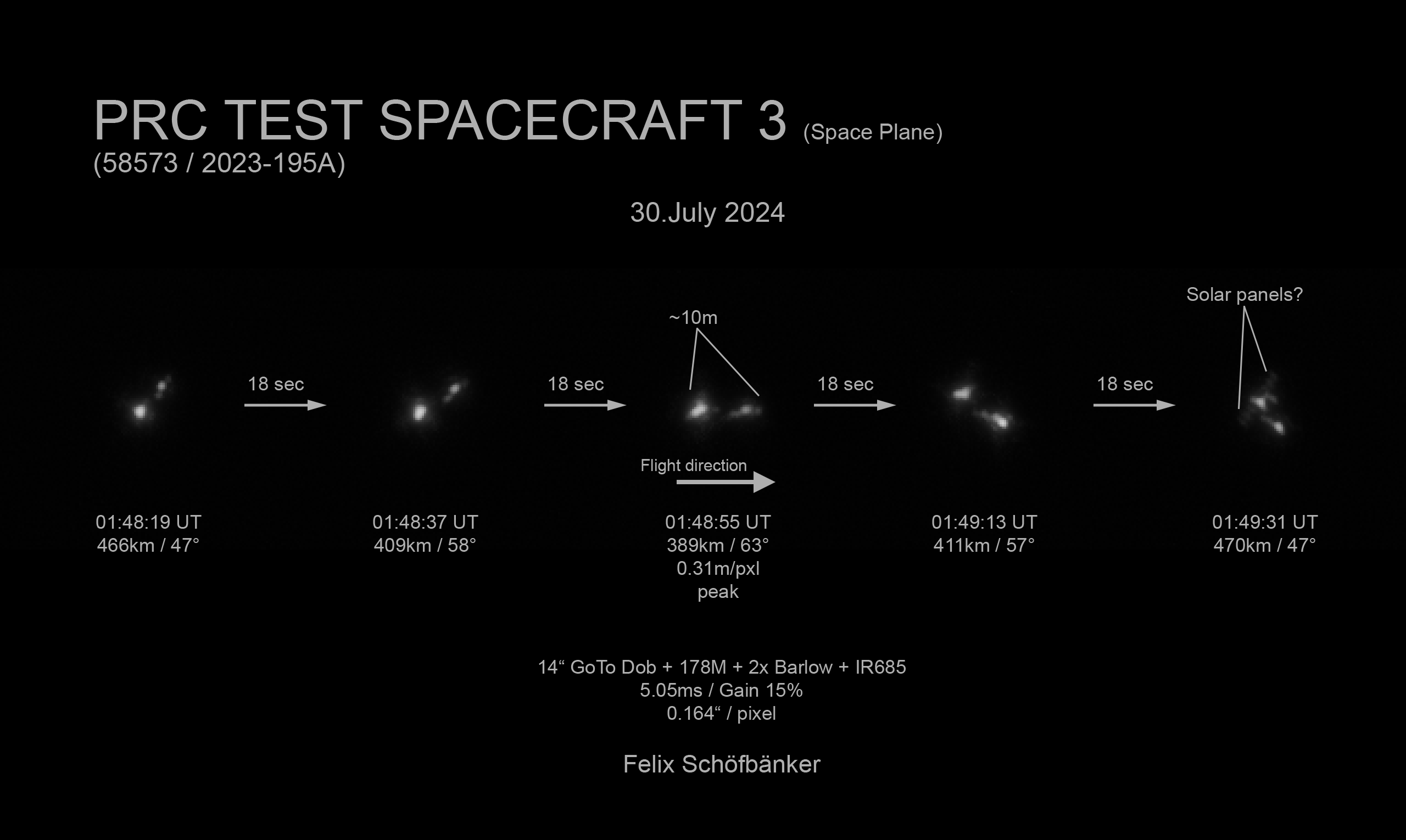China's secretive space plane caught on camera in orbit (photos)

Two solar panels that can be seen at the end aren't visible on any of the computer renderings available online.

That mysterious Chinese space plane has been newly caught on camera by a satellite watcher who snagged new imagery of the high-flying robotic vehicle.
China's space plane, now circling Earth on its third flight, was lobbed into orbit on Dec. 14, 2023 by a Long March 2F rocket.
Space watcher veteran Felix Schöfbänker in Upper Austria took the imagery.
Equipment used
Schöfbänker made use of a telescope having a 14-inch mirror and assorted gear capable of following satellites that keeps them automatically in the center of a field of view, finessing the equipment with a bit of input and corrections, he told Space.com
"I make these images by taking a video during the flyover and then stacking (averaging out) and sharpening the best frames," Schöfbänker said.
What's seen?
The two solar panels that can be seen at the end aren't visible on any of the computer renderings available online, Schöfbänker advised. "I am not really sure if they are solar panels or some other features like an antenna or something of that nature."
In terms of size, the satellite spotter measures the craft to be more or less 30 feet (10 meters) in length, which would make it longer than the American X-37B space plane operated by the U.S. Space Force.
Breaking space news, the latest updates on rocket launches, skywatching events and more!
"But this could also be a bit off, since the angle that the plane is illuminated could hide certain features," Schöfbänker said.
The 10 meters length would still fit inside the booster used to rocket it into space, Schöfbänker added. "I can't say anything about the wingspan since they aren't visible in my images. But previous launches had to make small cutouts for the wings to fit."
Orbit changes
Schöfbänker noted that the Chinese space plane appears to be oriented with the nose facing the front of the flight path, like a normal plane. The vehicle recently lowered its orbit to roughly 217 miles (350 kilometers) above Earth.
What China is gleaning from the craft's third flight is unknown. That situation is similar to what the currently flying U.S. Space Force X-37B is accomplishing after its launch on Dec. 29, 2023 and now 216 days into its secretive mission.

Leonard David is an award-winning space journalist who has been reporting on space activities for more than 50 years. Currently writing as Space.com's Space Insider Columnist among his other projects, Leonard has authored numerous books on space exploration, Mars missions and more, with his latest being "Moon Rush: The New Space Race" published in 2019 by National Geographic. He also wrote "Mars: Our Future on the Red Planet" released in 2016 by National Geographic. Leonard has served as a correspondent for SpaceNews, Scientific American and Aerospace America for the AIAA. He has received many awards, including the first Ordway Award for Sustained Excellence in Spaceflight History in 2015 at the AAS Wernher von Braun Memorial Symposium. You can find out Leonard's latest project at his website and on Twitter.

